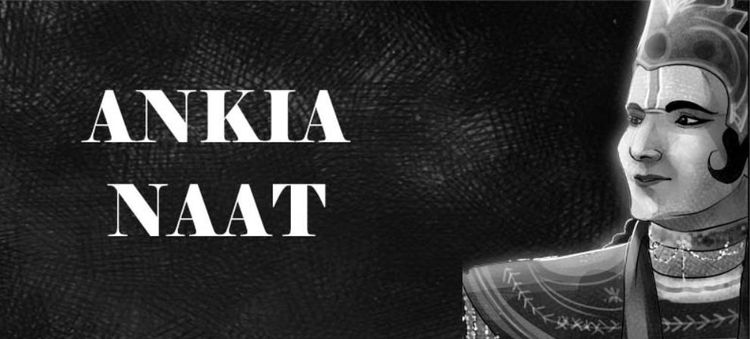For smooth Ad free experience
For smooth Ad free experience
Drama is a comprehensive art form. This art form spreads over all cultural backgrounds and depicts all facets of daily life. Assam's traditional art form, Ankia Naat, has some distinctive characteristics.

Ankia Naat: A Distinctive Art Form in the Assamese Tradition
If we check the roots of Indian literature and art forms from different parts of the country, we can see the contributions of such movements and the impacts created by them. The Bhakti Movement, spearheaded by religious and secular reformers, reached its zenith in the seventeenth century and was a significant factor in the radical transformation of medieval Indian society. It had a profound impact on global culture and customs. As part of the Bhakti tradition, many traditional art forms were developed throughout India. Ankia naat is an Assamese traditional art form that falls into this category.
For many of us, the cultural art forms from the northeastern parts of the country are unknown. They also have different cultural contributions to the world of art and literature. Ankia Naat is the main conventional art form widespread in Assam and deeply connected with their cultural roots.
Ankia naat, a traditional dance drama that falls into the mono-act play category, was first introduced by Srimantha Sankaradeva. Srimantha Sankaradeva was a renowned cultural reformer in Assam. He was an artist, poet, and social activist. He was born in a community where people led middle-class life and did not possess high education. So, his main goal was to get rid of the superstitions, taboos, and unethical beliefs that people had at the time so that they could understand what life was like. Sankardeva gave birth to Kavya, Geet, Chitra, Nritya, and Nata in Assam so that people there would learn good and evil. Bhaona refers to the performance of the Ankiya Natas, which were written by Srimanta Sankaradeva and his successor and disciple Madhavadeva. In Ankia Naat, the main topics revolve around the worship of Lord Krishna. Ankiya Naat's plays were written in Brajavali, an artificial Assamese language mixed with the Maithili language. Live instruments and singers are frequently used in the plays.
Ankia Naat or Bhaona is typically done in the namghar (prayer house) of a satra or village. Several rituals must be performed before the actual bhaona can begin. A distinguishing feature of Ankia Naat is its versed prose. As far as we know, Sankardeva's plays are the first to feature this pose in Assamese literature.
Apart from other forms of drama, Ankia Naat has a unique character called ‘Sutradhara’ who depicts the story to the audience. Following his creative inclinations, Sankardeva created the ‘sutradhara’. In addition, the ‘sutradhara’ guarantees the play's smooth progression from scene to scene, period to period, and act to act.
Songs, dances, and music are plenty in Ankia Naat. Only when these elements are displayed in harmony is the play's staging complete. The entire album is composed of songs based on traditional ragas. Actors will communicate information that cannot be shown on stage through hand, arm, and other body gestures. As is the norm, music always plays in the background while these performances occur.
Through dances, songs, and acting that portray the deeds of the god in his various incarnations, the Ankiya Naat aimed to create an impact of devotional sentiment in the audience's mind. Rather than focusing on the actors and their acts, Ankia Naat emphasizes creating Bhakti Rasa in the audience's mind. This is what makes this mono-act play special.
0
You might be interested in reading more from
